Tips to Keep Your Dog Safe from Sunburn
Posted: 05/23/2023 | BY: Erin Cain | Categories: Health problems , Pet care , Top Tips
The dog days of summer are upon us, which means plenty of time spent outside in the sun! While it’s always essential to ensure your dog has plenty of water and shade available, it’s also crucial to protect them from sunburn. Dogs can quickly get sunburned, especially on their ears, nose, and belly. This blog post will discuss some tips on keeping your dog safe from sunburn this summer.

What is dog sunburn?
Why do dogs get sunburns? The answer is simple—they suffer from overexposure to UV rays. As with people, when our canine friends go outside on a sunny day without sun protection, they can suffer damage from the sun’s rays. Their skin becomes red, tender, cracked, and tight.
Overexposure can happen to your dog if they spend too much time in direct sunlight. This sun exposure might occur during long hours outdoors. It can even happen when there’s a mainly sunny spot near an indoor window where the dog lies down or sleeps.
Dogs are just like humans in that they also have different skin tones. Dogs with lighter-colored or white fur or thin coats can get sunburn more easily than dogs with darker hair or blackened coats. Light-colored dogs have less protection from harmful UV rays on exposed areas. Hairless pups are at higher risk for sunburn, too.
Sunburns are much more likely to occur during the summer months, but they can develop at any time of year — even in winter — or on cloudy days. Dogs get sunburnt quickly in any season if their coats don’t protect them from UV rays. Unfortunately, UV rays exposure often leads to a skin cancer diagnosis.
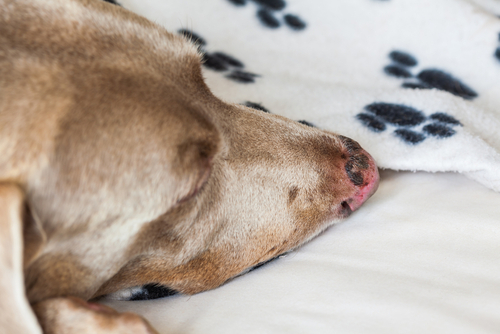
Sunburn symptoms and levels of injury
Luckily, you can treat your dog’s sunburn just as you would your own. The first step is knowing how to tell if the pup is sunburned and what signs point toward this unfortunate situation for your dog.
Sunburn symptoms
There are many different dog sunburns, but identifying which one your pup has can help you apply the best treatments and avoid severe reactions. Some symptoms may be difficult to distinguish from other skin issues like allergies or bug bites. Here are the primary signs of sunburn in dogs:
- skin sensitivity
- redness
- itchiness
- blistering
- dry, flaking skin
- fever
- peeling skin
- cracked skin
The areas on a dog that are most likely to be sunburned are the nose (especially if the nose is pink), around the eyes, ears, belly, and stomach area, or anywhere else where the dog has little to no fur.
Types of sunburn
When people get sunburned, they know it! We can feel our body’s inflammatory response to skin damage through redness, itchiness, and heat. Unfortunately, your dog can’t tell you when he’s feeling the discomfort of a sunburn, so it’s important to be able to recognize physical signs and severity. Here are the three levels of sunburn all dog owners should know:
Superficial partial-thickness (first-degree burn)
The most common types of sunburn on dogs and people are superficial partial-thickness burns. These first-degree burns damage the surface layer of the skin (epidermis). Still, they aren’t usually painful unless there is an underlying problem with your dog’s immune system, which makes him more susceptible to infection from this type of burn.
These burns are not as severe or dangerous, but they can still be painful. Superficial burns may cause peeling skin and take a few weeks to recover. Despite its low damage status, first-degree burns can still result in a secondary infection without proper treatment.
Deep partial-thickness (second-degree burn)
Second-degree burns, or deep partial-thickness burns, affect the top few uppermost layers of skin and are often more painful than first-degree burns. This burn type often causes blisters to form on the skin in humans, although the same damage isn’t always true for dogs. Deep partial-thickness burns take much longer to heal than superficial burns.
Full-thickness (third-degree burn)
Full-thickness burns, or third-degree burns, are the most severe type of burn and can affect all layers of your pet’s skin. These intense burns cause damage to nerve tissue as well, which will make the healing process difficult without veterinary medicine and intervention. Aside from the significant pain associated with these burns, the exposed skin also takes on a scorched or charred appearance.
When your dog’s skin burns at this level, it can lead to permanent scarring and even death. This damage happens when the immune system cannot repair the body because it’s too busy fighting off infection and trauma. Suppose you notice your dog has experienced high-level burns of the same severity. In that case, it’s essential to contact a vet immediately. These burns are excruciating and require special care, often grafting skin where the skin meets the coat.
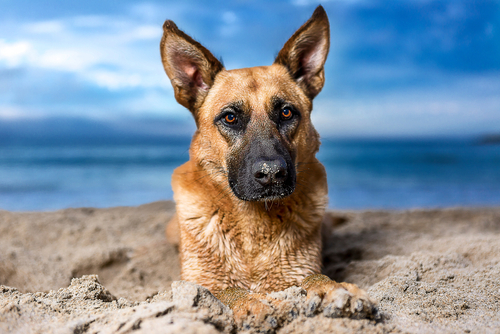
Sunburn and skin cancer
The sun is dangerous to our pets as well. Like people, repeated exposure can lead to skin cancer and other ailments caused by harmful UV rays. Squamous cell carcinoma is one type of common sunlight-induced disease in dogs that can occur with frequent exposure to the sun. This type of cancer can cause open sores and hair loss in the area around it. These growths often appear as charred-colored ulcers or red bumps with raised edges from inflammation.
The most common places for skin cancer are the nose, ears, and stomach. Squamous cell carcinoma occurs orally as well. Check your pup regularly for any abnormal growths and signs of cancer to make sure they stay safe this summer.
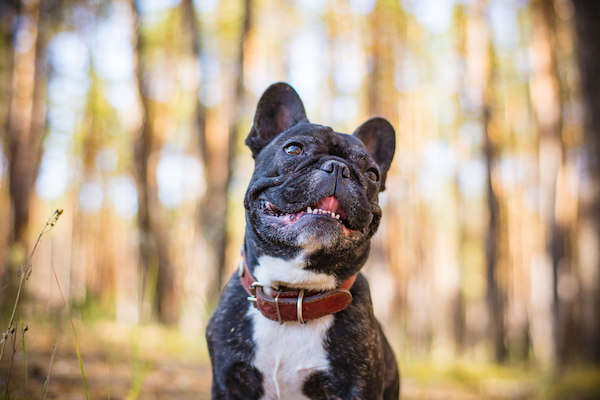
Dog breeds prone to sunburn
Any dog can suffer from sunburn in areas with no or minimal fur. However, some canine breeds are more susceptible to sunburn and cancer than others.
Their skin tone can determine the types of dogs prone to sunburns. For example, white or light-skinned breeds have fair fur just beneath the top layer of the coat, which makes them very vulnerable to sunburn when exposed to direct sunlight. These dogs often have light pigment-colored noses and white or light eyelashes, two other qualities that expose them to potential sun damage. The breeds that fall into this category are Bulldogs, Collies, Whippets, Dalmatians, white German Shepherds, and Australian Shepherds.
Dogs with naturally thin fur, especially hairless breeds, are at a higher risk for sunburn and cancer. They can’t protect themselves from exposure to the harmful effects of UV rays. The breeds most impacted due to thinning hair or lack of hair are:
- Mexican hairless dog
- Chinese crested
- Boxer
- Greyhound
- American Staffordshire Terrier
- Weimaraner
Some dogs who suffer from various ailments may also get sunburned more easily. Canines with medical conditions such as seasonal alopecia, hypothyroidism, Cushing’s disease, and mange are at higher risk of sunburn and cancer.
While dogs with thick coats may be at a lesser risk for sunburn, it’s essential to monitor them for seasonal shedding, which may increase the likelihood of sunburn.
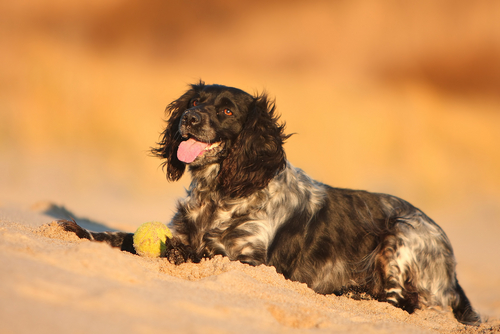
How to treat dog sunburn
Contacting your local vet is always the first line of defense for any burn. They might have some dog-specific products on hand to help out. They will assess the severity of the dog’s burn and recommend the appropriate treatment.
Veterinary therapies may involve:
- Shaving the affected area.
- Cleaning it carefully with soap or water.
- Applying topical ointments which protect against infection.
In case of a severe burn, the vet will have your dog treated immediately at the clinic, which may require skin grafts and extended hospitalization.
The best way to tell if your dog is sunburned is to look at his skin. You’ll be able to see red or pink skin, especially near vulnerable areas like the ears, eyes, and nose. You can treat your dog’s sunburn with a soothing product like aloe vera gel or witch hazel to help relieve the pain and inflammation. Another good idea is to use coconut oil, which effectively protects against UV ray damage and leaves their skin moisturized for hours after treatment.
Another option is to use a cold compress over the damaged skin. If you have cool towels on hand, place one over the affected area of your dog’s skin to help with any discomfort.
Baths are also a way to treat your pup’s sunburn. You can make a soothing oatmeal bath for your dog by using lukewarm water with the oats subsequently ground into powder. You could also add aloe vera to a bath to help alleviate your dog’s pain, and a neem oil bath may be an effective treatment for your dog’s skin.

Ways to prevent sunburn in dogs
To avoid sunburn, keep your pup away from prolonged sun exposure as much as possible, especially when the sun is at its hottest. Obviously, going outside with your dog is not a bad idea, but you can take steps to keep them safe from sunburn with more sun protection:
Dog sunscreens
Take care of your pup’s sensitive areas with a veterinary-approved dog sunscreen, which provides a sun protection balm applied to the belly, nose, eyes, and ears. Always use pet-friendly sunscreen; never apply generic sunscreen, especially a human sunscreen, to your dog because it contains ingredients toxic to pets. Do not use a human sunscreen with zinc oxide or para-aminobenzoic acid (PABA) because these toxins will make your dog sick if ingested. The dog’s sunscreen should be water-resistant and have a sun protection factor (SPF) of 30 or more.
To apply your dog’s sunscreen, test one small area on his body first to test for an allergic reaction. Then, apply sunscreen to the dog’s most sensitive and damage-prone regions, including the ear tips, bridge of the dog’s nose, and the skin around the lips, belly, inner thighs, groin, and anywhere else light pigmented in color.
Avoid getting dog sunscreen in your pup’s eyes. Observe your dog for about 15 minutes after application to ensure he doesn’t lick any of it off. It’s best to apply sunscreen roughly 20 minutes before your dog goes outside. Remember to reapply sunscreen to your dog every four to six hours or immediately after swimming.
Talk with your dog’s veterinarian if you aren’t sure where to find the best dog sunscreen or pet-safe sunscreens. They will be able to provide you with the names of the safest pet sunscreen for your pup.
Don’t forget the paws!
You may not know it, but your dog’s paws are just as susceptible to sunburn. Yes, the paws face down and away from the scorching hot sun; however, they become even hotter because of the sun’s impact and reflection off surfaces like sidewalks and asphalt. The heat from those surfaces can burn a dog’s paw pads in minutes. Apply a sun protectant paw balm to the dog’s foot pads. The product creates an effective barrier between their skin and hot surfaces, protecting them from damage.
Use protective clothing.
If you want to keep your pup safe while enjoying the outdoors, consider investing in protective clothing. Several companies make sun shirts or suits for dogs that cover large areas of their bodies and protect them against sunburn and skin damage. You can even find dog sun hats and dog goggles to protect your pup when he’s out in the sun.
Some veterinary product outlets sell pet-specific SPF and UV-protected clothing that will help keep your pup safe in direct sunlight. Ask your vet for more details or advice on the best clothing to purchase for your furry friend.
Always look for shade.
The best way to keep your pup from getting burned by the sun is by keeping them out of direct sunlight. You don’t want their delicate skin exposed for hours on end, so make sure they have a shady retreat nearby. Ensure your pup has constant access to a shady spot and keep him in the shade as much as possible. Not only will they be able to avoid sunburns, but also overheating.
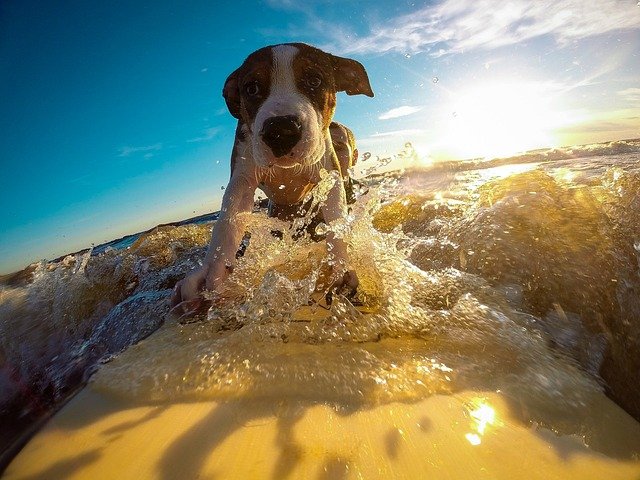
Keep your dog safe with pet insurance!
You and your pup can still have fun in the sun, but with proper sun protection. However, despite pet parents’ best efforts, our dogs sometimes suffer from sunburn or other medical issues that we hadn’t planned or budgeted for. That’s why a pet insurance policy is a smart purchase.
Pet Insurance Review wants all pet parents to have the ability to provide the best medical care for their furkids, no matter the cost. We find the best pet insurance plans for your dog’s needs and your budget. Find out more about how a pet insurance plan can help your pet! Start with a free quote today to see how you can better protect your dog.
References:
- Gomes, P. (2019). Burns. Retrieved from https://www.cliniciansbrief.com/article/burns
- Jenkins, G. (2018). How to manage thermal burn wounds. Retrieved from https://www.veterinary-practice.com/article/how-to-manage-thermal-burn-wounds
- VetsNow. (2020). Burns and Scalds in Dogs. Retrieved from https://www.vets-now.com/pet-care-advice/burns-and-scalds-in-dogs/
- FirstVet. (2021). Squamous Cell Carcinoma in Dogs. Retrieved from https://firstvet.com/us/articles/squamous-cell-carcinoma-in-dogs
- Veterinärmedizinische Universität Wien. (2014). Some dogs and cats prone to sunburn: How to protect your animal from skin damage. Retrieved from https://www.sciencedaily.com/releases/2014/06/140627094406.htm
- Meyers, H. (2021). Do Dogs Need Sunscreen? Retrieved from https://www.akc.org/expert-advice/health/do-dogs-need-sunscreen/
- Baines, K. (2013). Protect the Paws this summer! Retrieved from https://www.akc.org/expert-advice/health/do-dogs-need-sunscreen/
- Dogwood Referrals. (2022). What is Seasonal Alopecia in Dogs? Retrieved from https://www.dogwoodreferrals.co.uk/blog/what-is-seasonal-alopecia-in-dogs
- Prahl, A. (2020). Cushing’s Disease in Dogs. Retrieved from https://www.ethosvet.com/blog-post/cushings-disease-in-dogs/
- Esposito, D. (2021). Best Dog Sun Shirts to Protect Your Pup. Retrieved from https://www.thedodo.com/dodowell/dog-sun-shirts
The information contained on this blog is intended for informational and educational purposes only and should not be construed as medical advice. It is not a substitute for professional veterinary care. Always consult with your veterinarian before making any changes to your pet's health care or treatment plan.
The authors of this blog are not veterinarians and do not claim to be experts in pet health. The information provided here is based on our own experiences and research, as well as information from reputable sources. However, we cannot guarantee the accuracy or completeness of this information.
We encourage you to do your own research and consult with your veterinarian before making any decisions about your pet's health.
Previous post
Why is My Cat Panting?Next post
Are Catios Safe for Cats?Compare top pet insurance providers plans.
Enter your dog’s age in years and months to calculate their age equivalent to human years.
Calculate your dog’s ageEnter your cat’s age in years and months to calculate their age equivalent to human years.
Calculate your cat’s age